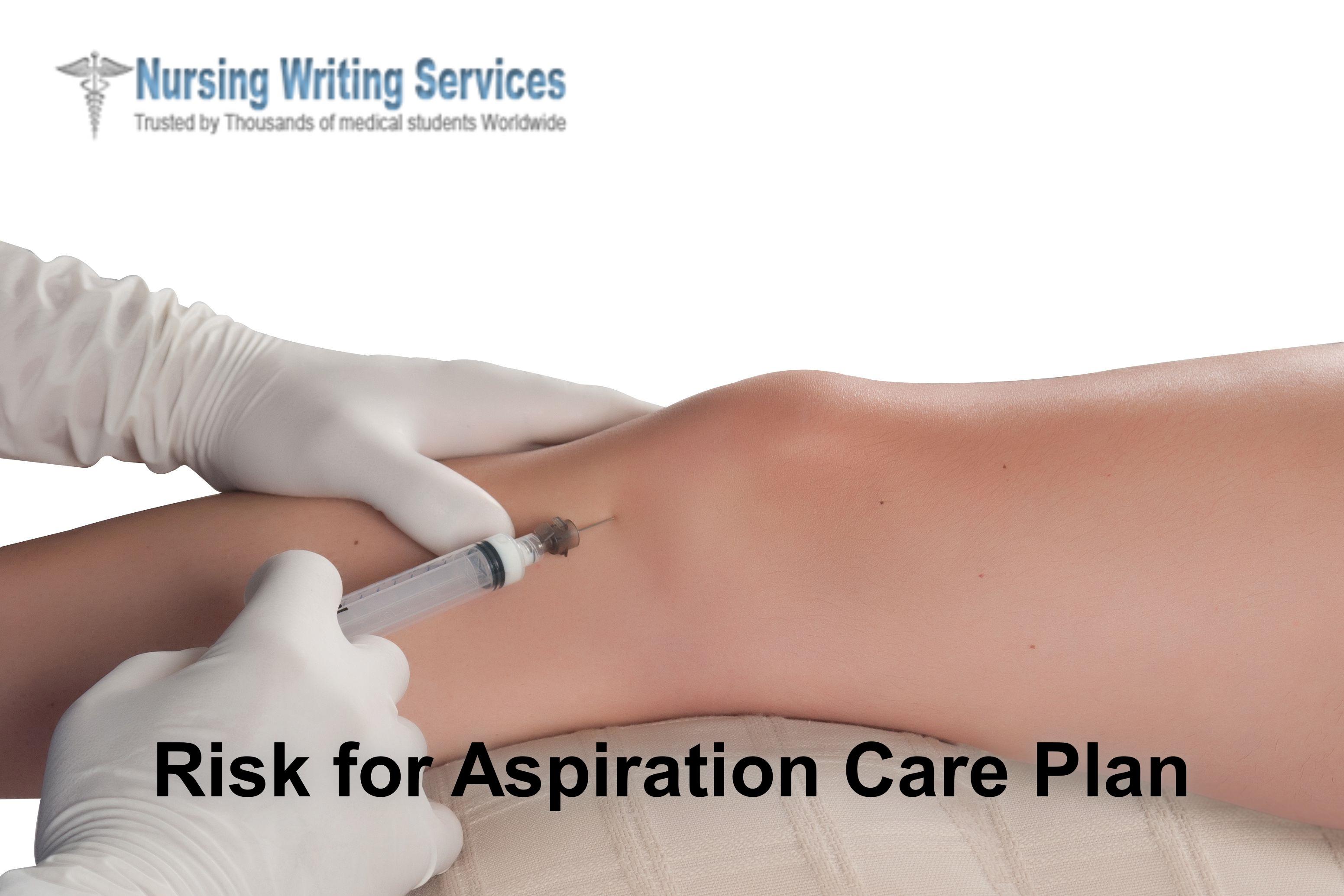Risk for Aspiration Care Plan

Aspiration is breathing in of a foreign object like food or liquid into the trachea and lungs. It occurs when something has led to jeopardizing or reducing of protective reflexes. The risk for aspiration is to be in the danger of inhaling something harmful which puts the person at the risk of an infection. Aspiration of chemical fumes, gastric acids, or vomit can damage lung tissue. A Risk for Aspiration Care Plan is a serious medical and academic document which requires in-depth research and knowledge. Risk for Aspiration Care Plan Writing Services providers helps you in writing a reliable and quality care plan sparing the strain. Nursing Writing Services has the best and highly experienced professional care plan writers guaranteeing the best Risk for Aspiration Care Plan Writing Services.
Risk for Aspiration Care Plan Diagnosis
Sometimes aspiration is silent, but it is essential that a nurse also considers these signs and symptoms to determine the likelihood of its existence when thinking about care plan.
- Sudden cough
- Wheezing
- Troubled breathing
- Hoarse voice after a meal, drink or vomiting
- Severe heartburn
- If the above signs occur frequently, it could be a sign of chronic aspiration.
Risk for Aspiration Care Plan Goals and outcomes
Prevention should be the main goal that a caregiver should have in mind when planning care plan. Also, a good care plan should enable the patient to achieve the following at the end care:
- Be free of aspiration and reduce the risk of recurrence
- Expectorate clear secretions and free of aspiration
- Maintain patent airway and normal breathing sounds
- Swallows oral, gastric or nasogastric feeding without aspiration
Risk for Aspiration Care Plan Assessment and Rationales
A nurse should prepare for assessment as part of care plan for risk for aspiration distinguish its existence, possible causes and other episodes that might occur during nursing care.
These assessments are necessary.
Monitor depth, effort, and rate of respiration
Monitoring a patient for any signs of a cough, wheezing, fever, or dyspnea is crucial. A caregiver should try to discover the signs of aspiration early for immediate treatment. It prevents manifestation and pooling of residue as it occurs in cases of silent aspiration.
Evaluate swallowing ability
Watch out for coughing, gurgling, regurgitation or residual food after eating. Impaired swallowing increases the risk of aspiration. Also determine if there is vomit or nausea.
Arrange for swallowing study and assess results
Videofluoroscopic is necessary for high-risk patients in determining nature and extent of swallowing abnormality. Inability to swallow causes sticking to food in tracheobronchial passages thus increasing aspirated material.
Auscultate bowel and breathe sound
Reduced gastrointestinal motility causes food build-up and increases the risk of aspiration. Crackle and rhonchi that occur suddenly could be an indicator of a small amount of aspiration. If the occurrence is frequent or continuous without coughing, a chest x-ray can help to determine if there any aspiration.
Risk for Aspiration Care Plan Interventions and Rationales
An excellent care plan should have sites that a caregiver should take for therapeutic purposes.
Elevate the head of the bed for bedridden patients
Maintaining sitting position when feeding and at least 30 minutes after a meal helps to decrease aspiration pneumonia. When the patient sleeps, it should be on the side if the person has decreased level of consciousness. It promotes drainage of secretion from the mouth rather than down to pharynx where it may cause aspiration.
Supervise oral feeding
The patient should feed when fully conscious. The food should be something easy to swallow mostly semisolid and thickened stuff like pudding. Thin foods and liquids are difficult to swallow for dysphagia patients. Ensure that the patient chews properly and eats without distractions such talking or watching TV. It is easy for a patient to swallow well-chewed food. Discouraging talking and eating prevent the risk of aspiration as food can enter the open airway.
Add drops of green or blue food coloring to a feeding tube
For patient surviving on gastronomy tubes, a caregiver should ask the physicians approval to add food color. If colored coughs or secretions appear, it shows that aspiration ha take place. A glucose test for tracheobronchial secretion also helps to detect aspiration. Early detection helps in defining the necessary treatment before it worsens.
Keep a suction machine nearby when feeding a high-risk patient
A patient with high risk of aspiration requires immediate suction it if occurs before other lifesaving interventions like intubation.
A caregiver should not forget to advice or even help the patient to maintain a high degree of oral hygiene. Keeping the moth clean before eating reduces bacteria in the oral cavity and after eating, it helps to remove residue food that could be a cause of aspiration.
At Nursing Writing Services we offer you Risk for Aspiration Care Plan Writing Services and allow you to work with skilled writers from whom you will gain insights pertaining the topic. Risk for Aspiration Care Plan should have a well outlined process and set of actions in relation care needed. This way you will get to carry your medical care smoothly or help you gain marks in cases of academic purpose. Our aim is to offer you Qulaity Risk for Aspiration Care Plan Writing Services for the best and reliable care plan you need or for your academic success.
- Nursing Care Plans Writing Services
- Nursing Care Plans in APA Writing Help
- Best Nursing Care Plan Writers



